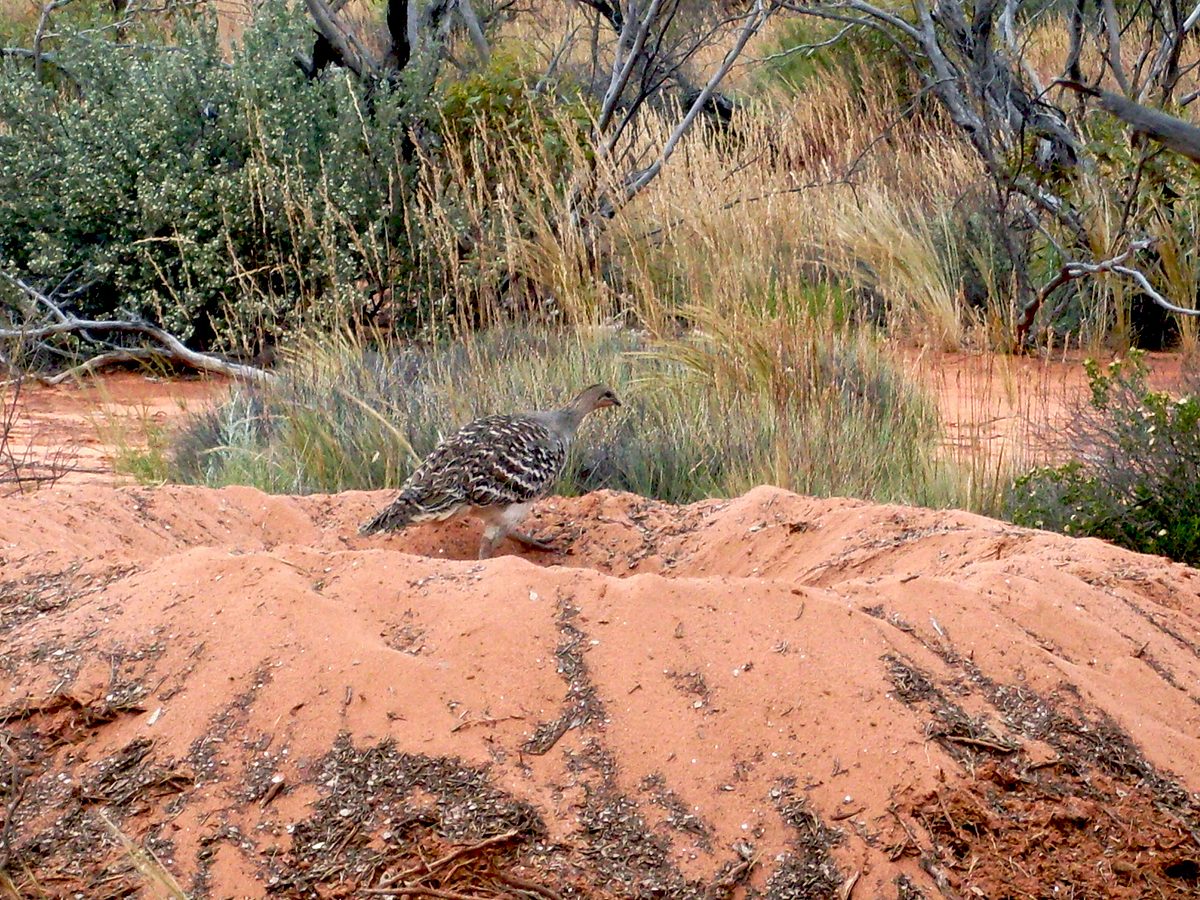Once they’re gone, they’re gone: securing a future for our threatened plants and animals
Habitat loss, feral predators, bushfires, climate change – South Australia’s native plants and animals face plenty of challenges, but it’s not all bad news when it comes to threatened species.
Across the state, SA’s landscape boards are partnering with a wide range of organisations, including Indigenous rangers, community groups, government agencies and other stakeholders to secure a future for our threatened plants and animals.
Malleefowl–nganamara

The malleefowl, known in Pitjantjatjara as nganamara, is a ground-dwelling bird about the size of a large chicken. While they can fly, they rarely do so, relying instead on their camouflage to avoid predators.
Read 5 little known facts about these industrious and intriguing birds.
Malleefowl were previously found throughout much of semi-arid to arid Australia, but their range and population is now severely reduced and listed as vulnerable nationally and in South Australia.
This decline is mostly attributed to land clearing for farming: nganamara prefer the same sandy mallee habitat that is highly sought after for agriculture.
In addition, the species is under threat from cats and foxes, which prey on young and adult nganamara.
In the Alinytjara Wilurara landscape region, with a sparse population spread over a vast region, technology is being put into action to monitor the mounds and remove feral predators like foxes and cats, to give the nganamara, as well as other endangered species, a fighting chance.
Efforts to help protect malleefowl are also underway in other landscape regions.
As part of the Marna Banggara project, which aims to restore southern Yorke Peninsula’s spectacular landscape, malleefowl mounds in Dhilba Guuranda-Innes National Park are monitored each year. Read the 2023 results.
On the Eyre Peninsula, a landscape board supported citizen science project encourages the community to report malleefowl sightings to help with understanding the population distribution while another program monitors malleefowl breeding activity annually at a number of sites across the region as part of a program with the National Malleefowl Recovery Group.
The Alinytjara Wilurara project is funded by the Australian Government’s Natural Heritage Trust and delivered by the Alinytjara Wilurara Landscape Board, a member of the Commonwealth Regional Delivery Partners panel.
Marna Banggara is jointly funded through the Northern and Yorke Landscape Board, the Australian Government, the SA Department for Environment and Water, WWF-Australia and Foundation for National Parks & Wildlife.
A unique blue gum woodland - Eyre Peninsula

Eyre Peninsula is home to a species of blue gum (Eucalyptus petiolaris) found nowhere else in Australia.
These trees grow to become large, rough and twisted, and are usually associated with low-lying areas along watercourses.
Forming an Eyre Peninsula Blue Gum Woodland ecological community which is nationally endangered, these trees support more than 240 species of plants, many occurring at the ground layer.
This ecological community also provides habitat to at least 15 native species of mammals, 53 birds and 41 reptiles – 26 of which are rare or threatened.
This year the Yallunda Flat A & H Society has been granted a $5,000 landscape board Grassroots Grant to increase local awareness about this unique ecological community in their region.
The project will include the propagation and planting of EP blue gum trees and other natives, pruning and care of existing trees, and pest plant control.
It will also include building awareness of EP blue gums with the community through programs with local schools and signage being installed at the showgrounds.
Reversing the decline of woodland birds

They are elusive, shy, and incredibly vulnerable. There is a suite of more than 80 declining woodland birds across the Mount Lofty Ranges that are threatened species and at risk of extinction – once they’re gone, they’re gone.
Urgent, landscape-scale restoration of habitats is needed to reverse the declines.

A project to restore vital habitat for woodland birds in the Hills and Fleurieu region is rising to the challenge.
The Mount Lofty Ranges Bird Recovery Alliance provides a single point of contact for the 20+ organisations involved, backed by a wide range of experience, ideology and practical methodology.
The focus is on protecting existing habitat and creating more habitat.
Landscapes Hills and Fleurieu is proud to partner with the Department for Environment and Water and the Mt Lofty Ranges Bird Recovery Alliance on this critical project to reverse the decline of our woodland birds.
Working together with the community, they are confident that they can make a real difference and create a sustainable future for these threatened birds.
Alliance partners include Nature Conservation Society of SA, Trees for Life, Second Nature Conservancy, Greening Australia, Conservations Volunteers Australia, Bio-R, BirdsSA, Birdlife Australia, University of Adelaide, Department for Environment and Water, Green Adelaide, and Northern and Yorke, Murraylands and Riverland, and Hills and Fleurieu landscape boards.
Lists, legislation and plans in place to help protect threatened species
There are different scales for how a species may be considered threatened:
- on a global scale
- on a national scale
- on a state scale
- on a regional and local scale.
In South Australia, threatened species are given formal legal recognition under the National Parks and Wildlife Act 1972 as Endangered, Vulnerable or Rare.
The Australian Government’s Threatened Species Action Plan 2022–32 maps a pathway to protect, manage and restore Australia’s threatened species and important natural places.
It aims to prevent new extinctions, identify priority species and places, protect and conserve more than 30% of Australia’s land mass and increase participation of First Nations Peoples in the management and recovery of threatened species and threatened ecological communities
Regional landscape boards set out their approaches to recovering local threatened species and ecosystems in their 5-year regional landscape plans and annual business plans, available on their websites.
More information
Want to read more about how landscape boards are working to protect our threatened species? See Threatened species get a helping hand from landscape boards and From crays to cockatoos and saltmarsh to daisies – how landscape boards are helping protect threatened species.


